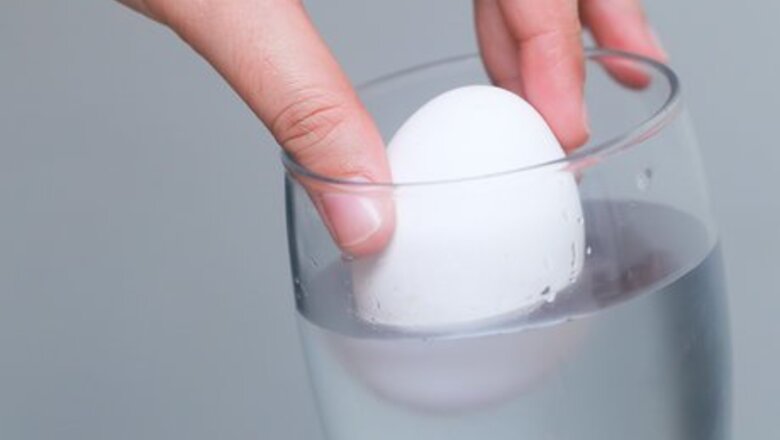
views
Testing for Freshness
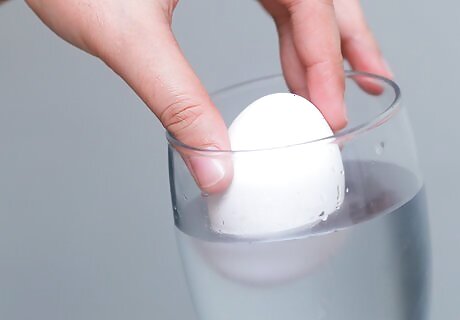
Place the egg in question in a bowl or wide glass of cold water and see if it floats. There is a tiny air pocket inside eggs, and over time more and more air passes through their porous shells and into the egg. As more air enters the egg, the air pocket grows larger, making the egg more buoyant. If the egg lays on its side on the bottom of the bowl, it is at peak freshness. If the egg stands upright on one end but is still touching the bottom, it is aging past its prime but is still safe to eat. If the egg is floating, it is not a fresh egg. This does not necessarily mean it’s bad or unsafe to eat. You should test the egg by cracking it open and looking for (or smelling) signs that it has gone bad.
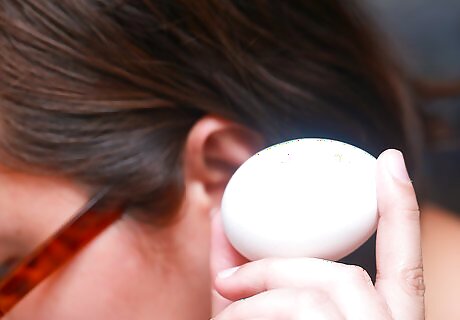
Hold the egg up to your ear and shake it, listening for a sloshing sound. As the egg ages and moisture and carbon dioxide escapes through the shell, the yolk and white begin to dry out and shrink, and the air pocket in the egg becomes bigger. A larger air pocket gives the egg more room to move around inside the shell and create a sloshing sound. A fresh egg should not make much, if any, sound when you shake it. A sloshing egg only indicates that the egg is old and does not mean the egg is unsafe for consumption.
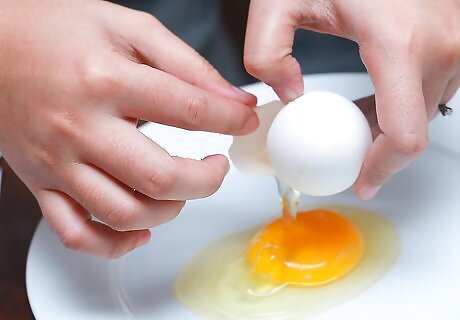
Crack the egg open on a plate or in a large bowl and check the quality of the yolk and white. The integrity of the egg will lessen as it ages, so it won't hold together as well as a fresh egg. Notice if the egg seems to spread over a wide distance on the plate, or if it stays relatively compact. An egg that spreads or seems a little watery has a thinner white and is past its peak freshness. If the yolk is flat and breaks easily, the egg is old. If the yolk moves around easily, this means the chalazae (the thicker strands of egg white that hold the yolk in place) have weakened and the egg is aging. Look at the color of the egg white. A cloudy white indicates a very fresh egg. A clear white means the egg is older (but may still be edible).
Identifying a Bad Egg
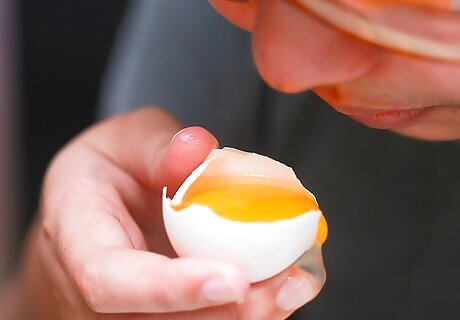
Break the egg open and notice if it smells. This is the best indicator of a bad egg. A bad egg will have a pungent, foul odor when you break it open. The sulfurous smell will be obvious as soon as the egg is cracked (and possibly before), and the egg should be thrown out. A bad egg will have this foul smell, regardless of whether it is raw or cooked.
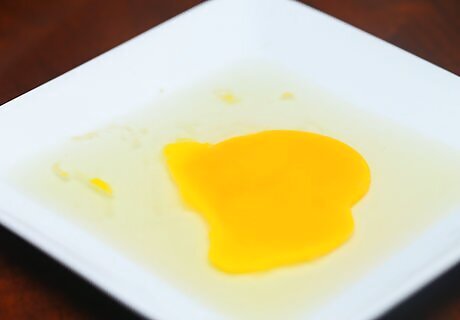
Break the egg into a small dish and inspect the color. The color of the yolk will change based on the diet of the hen who laid it, so the shade of yellow or orange nothing to do with freshness. Instead, inspect the egg white, or albumen. If it is pink, green, or iridescent, the egg has been contaminated by Pseudomonas bacteria and is not safe to eat. If you see black or green spots inside the egg, it has been contaminated by fungus and should be thrown away. If the yolk of a hard-cooked egg has a green ring around it, this means the egg has been overcooked or was cooked in water with a high iron content. This egg is still safe to eat. If there is a blood or meat spot on the egg, it is still safe to eat and does not mean the egg is contaminated or has gone bad. A blood spot occurs when a blood vessel ruptures when the egg is forming and has nothing to do with freshness.
Using Dates and Times
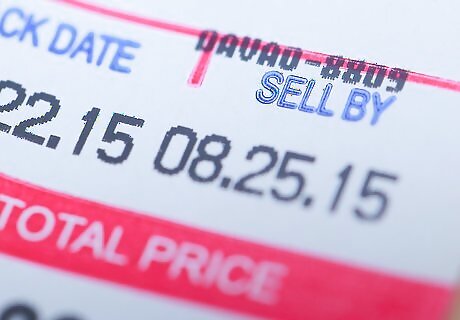
Check the "sell-by" date on the package. The sell-by date may also appear as "not to be sold after" or "EXP." This date is, at most, 30 days from the day the eggs were packaged. Eggs that are kept refrigerated and are not broken should be good for at least 1 month beyond the sell-by date. The sell-by date appears as month/day in the United States. So eggs that must be sold by March 15th are labeled 03/15. "Sell-by" refers to the last date the eggs should be available for the public to purchase. Eggs should be pulled from the shelf after this date. It does not mean the eggs are bad or rotten after this date.
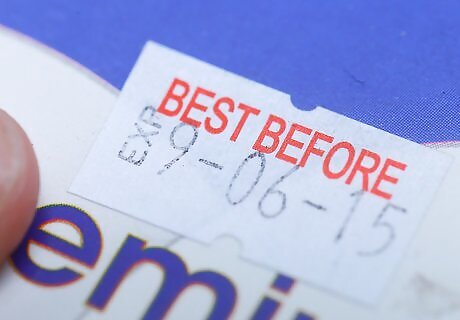
Check the "best-by" date on the package. The best-by date may also be labeled as "use by," "use before," or "best before." The best-by label must be within 45 days of the date the eggs were packaged. Try to use these eggs within two weeks after the best-by date. "Best-by" refers to the period of time eggs are at their peak freshness, with the best texture, flavor, and binding and thickening properties. It does not mean the eggs are bad or rotten after this date.
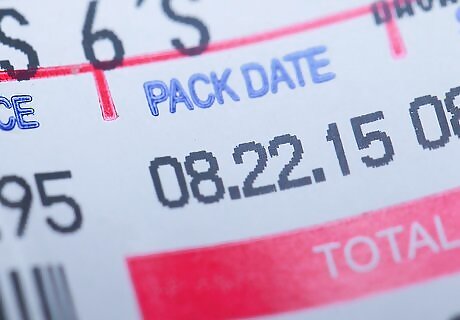
Use the 3-digit code that tells you when the eggs were packaged. Sell-by or best-by dates are not required by federal law (some states require them, other states forbid them), but all eggs must be labeled with the date they were packaged. This date usually appears as a 3 digit code using the Julian date calendar. This means eggs packaged on January 1st would be labeled 001, eggs packaged on October 15th would be labeled 288, December 31st 365. Look for the Julian date on the end of the carton. You'll see the plant code (a letter P followed by numbers) indicated where the eggs were packaged, and beside it you should find the Julian code. The European Union also requires that eggs are marked with a pack date. Even if eggs are sold loose and not in a marked carton, the consumer should have access to that information.
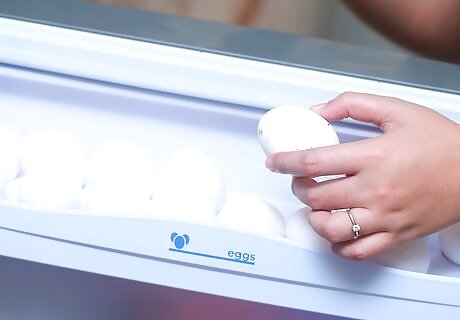
Throw out any eggs that have been refrigerated and then sat out at room temperature for two hours or more. Once an egg has cooled in your refrigerator, it is important to keep it at the same temperature. A cool egg in a warmer environment begins to sweat, which can encourage bacteria to grow on the outside of the egg. Because the egg shell is porous, it is sometimes possible for the bacteria on the shell to pass into through and contaminate the egg. To prevent temperature fluctuations, store your eggs in the coldest part of your refrigerator, not on the door. The temperature is more likely to fluctuate on the door when it is opening and closing, which may cause your eggs to sweat. If you receive your eggs unwashed and at room temperature, they do not need to be refrigerated. Many countries, including most European countries, keep their eggs at room temperature. This is safe because eggs are laid with a protective "bloom" which naturally keeps bacteria out. Once the eggs are washed, however, they must be refrigerated. Also, in most European countries, the hens have been inoculated against Salmonella prior to laying their eggs.
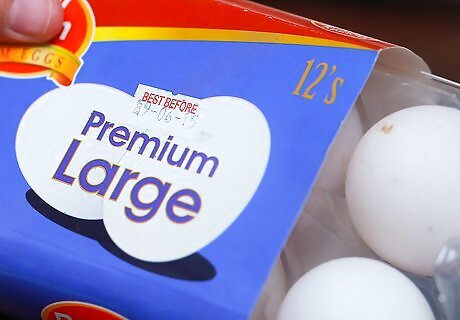
Use the packaging guidelines of your country to determine how long to keep your own eggs. If you have egg-laying hens and you're wondering when they will go bad, you can refer to your country's guidelines for freshness. It's a safe bet your eggs will be good for at least two months, if not more. If you're not sure how long you've had your fresh eggs or if you think they are older than two months, learn the signs of bad and old eggs to help you decide whether or not you should use them in your cooking.




















Comments
0 comment